Some local examples are shown below:
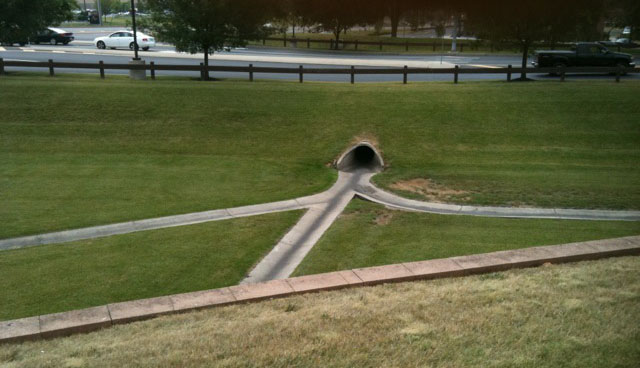
First, the old standard stormwater control method – a mowed dry detention basin with concrete low-flow channels (this one at Wegmans on Rt 248). Civil engineers have been designing these for the last several decades, and commercial landscaping companies have been happy to mow them every week. Controls peak flows for large very infrequent storms, but no retention of water, no reduction of runoff volume, no water quality treatment. And its ugly too.
The idea of sustainable (or “low-impact”) stormwater management using “best management practices” is to try to mimic the water balance of a natural landscape. This involves a much more holistic approach to hydrology that is very different than just concrete, pipes, and mowed lawn.
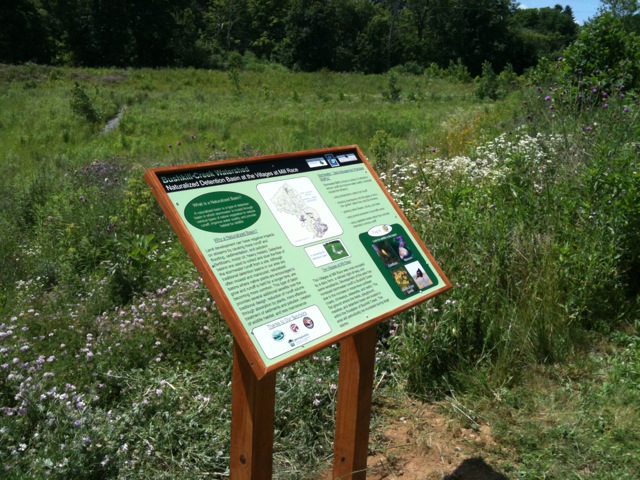
“Naturalized” extended detention basin at the Village of Mill Race a few miles up Bushkill Creek from Lafayette. Contrast to the picture above. Water is held for longer periods of time (i.e. “extended”) but the basin is allowed to drain completely. Water quality treatment, wildlife habitat and aesthetics, less maintenance, and the same peak runoff reduction benefits as the basin shown above.
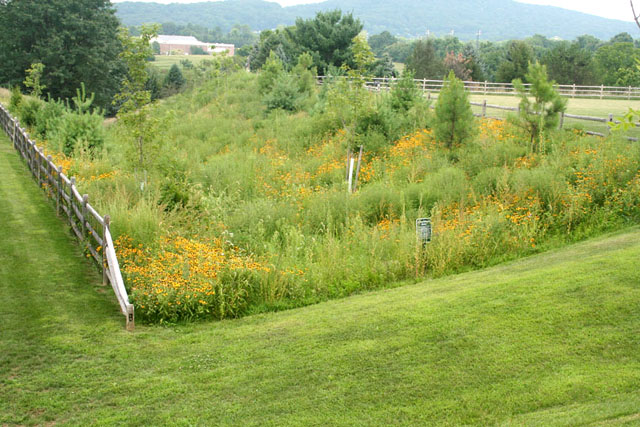
A naturalized swale at Polk Valley Park near Hellertown. Water retention, water quality treatment, wildlife habitat and aesthetics, and less maintenance than a lawn. These meadow areas take a few years and some active management (e.g., removal of invasive weeds, annual mowing) to get established. Canada Geese love mowed lawns but avoid these areas.
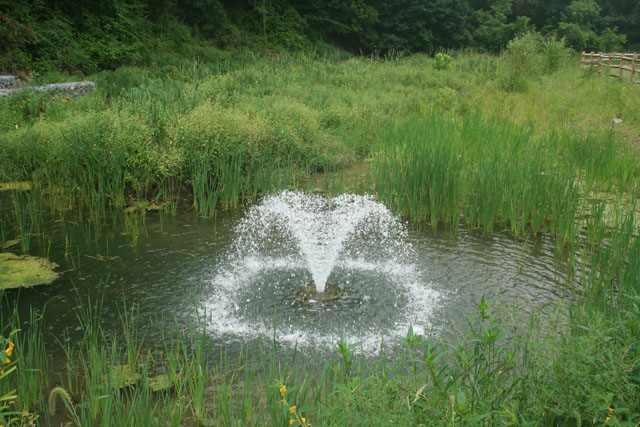
Constructed detention wetland in Sullivan Park, Easton, a half-mile from campus. Constructed wetlands require a permanent source of water, which is a rarity in much of the Lehigh Valley. The wetlands are typically seeded and/or planted with native species that are well adapted for wet conditions and provide wildlife habitat. It takes some time for these plantings to mature, and removal of invasive plants (e.g. purple loosestrife) may be needed. This project was a joint effort of the City of Easton, Bushkill Stream Conservancy, and Lafayette College Dept of Civil & Env Engineering.
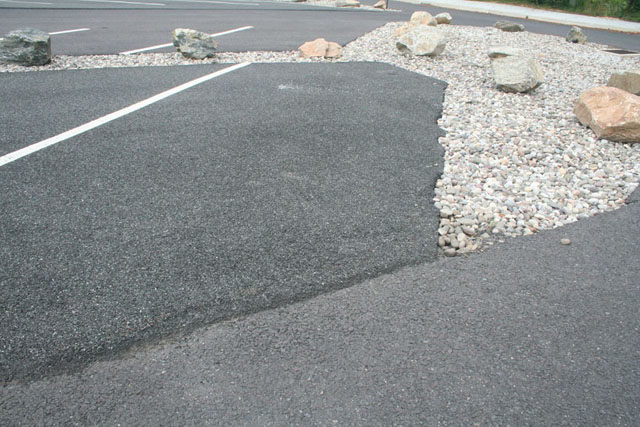
Porous pavement parking area and gravel infiltration beds at Polk Valley Park near Hellertown. Promotes infiltration of rainfall rather than the production of runoff.
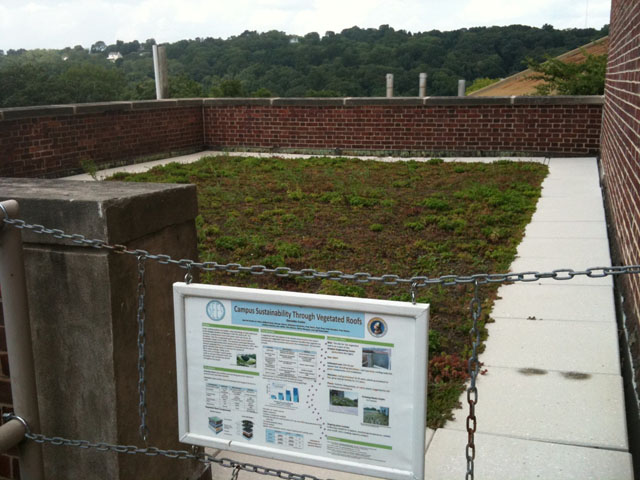
Green roof on a portion of the Acopian Engineering Center at Lafayette. Retains approximately the first half inch of rainfall, reducing runoff volume significantly. Also provides an insulation benefit.
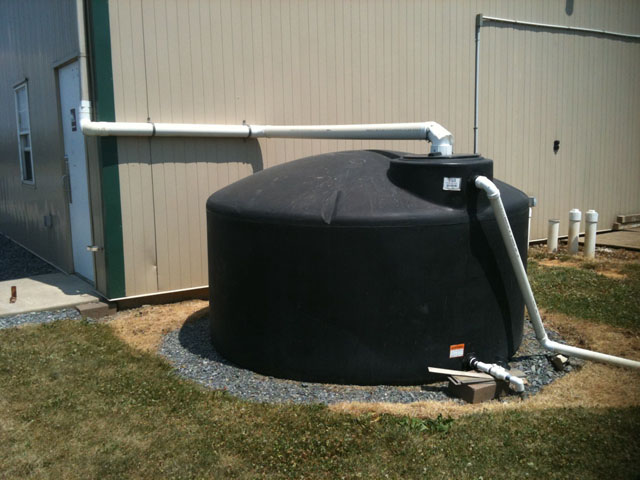
One of two 1200-gal rain collection tanks at the maintenance building upslope from the Lafayette Organic Garden. Captured water is used for irrigation of the garden. You may not realize that the production of typical grocery store food that is imported from dry places like California, Mexico, and the midwest is irrigated with large amounts of water – much more than the amount of water you drink each day. One more reason to eat local food.
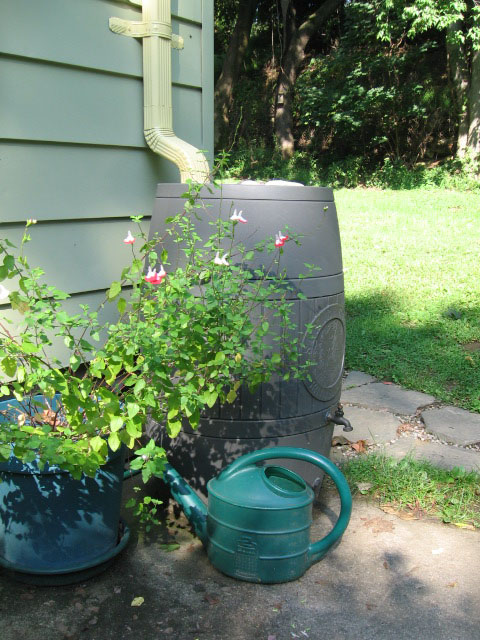
Same idea as the tank above, but in this case a 30-gal rain barrel that overflows to the infiltration bed under the adjacent stone walkway. Captured roof runoff is used to water flower pots and gardens.
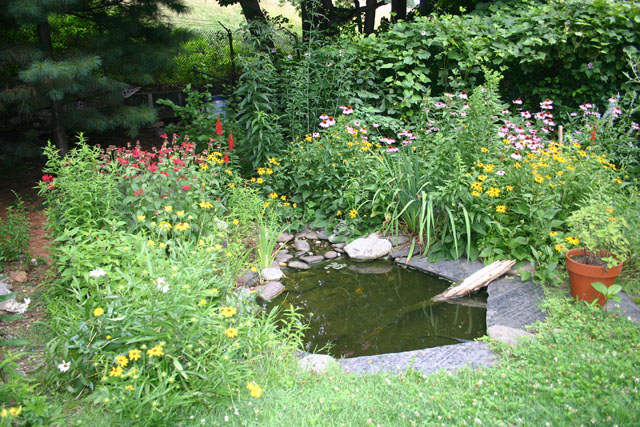
Backyard pond and surrounding raingarden. Overflow from a nearby rain barrel discharges to the raingarden. During dry periods, water is lost to evaporation and the pond begins to dry up, so a spigot was installed to allow water in the rain barrel to drain into the pond as needed. Small areas like this provide valuable habitat that attracts many beautiful and beneficial species of wildlife.